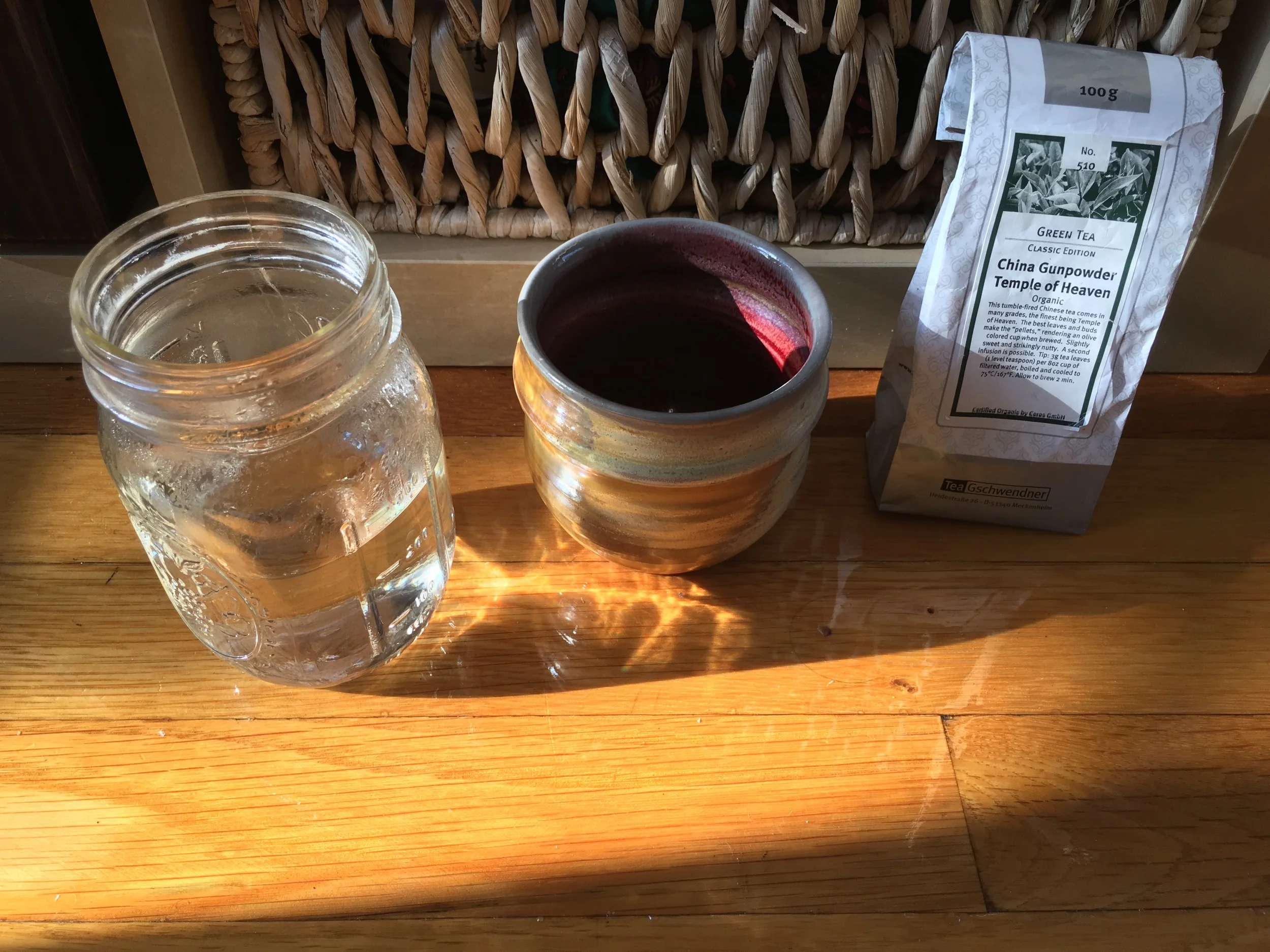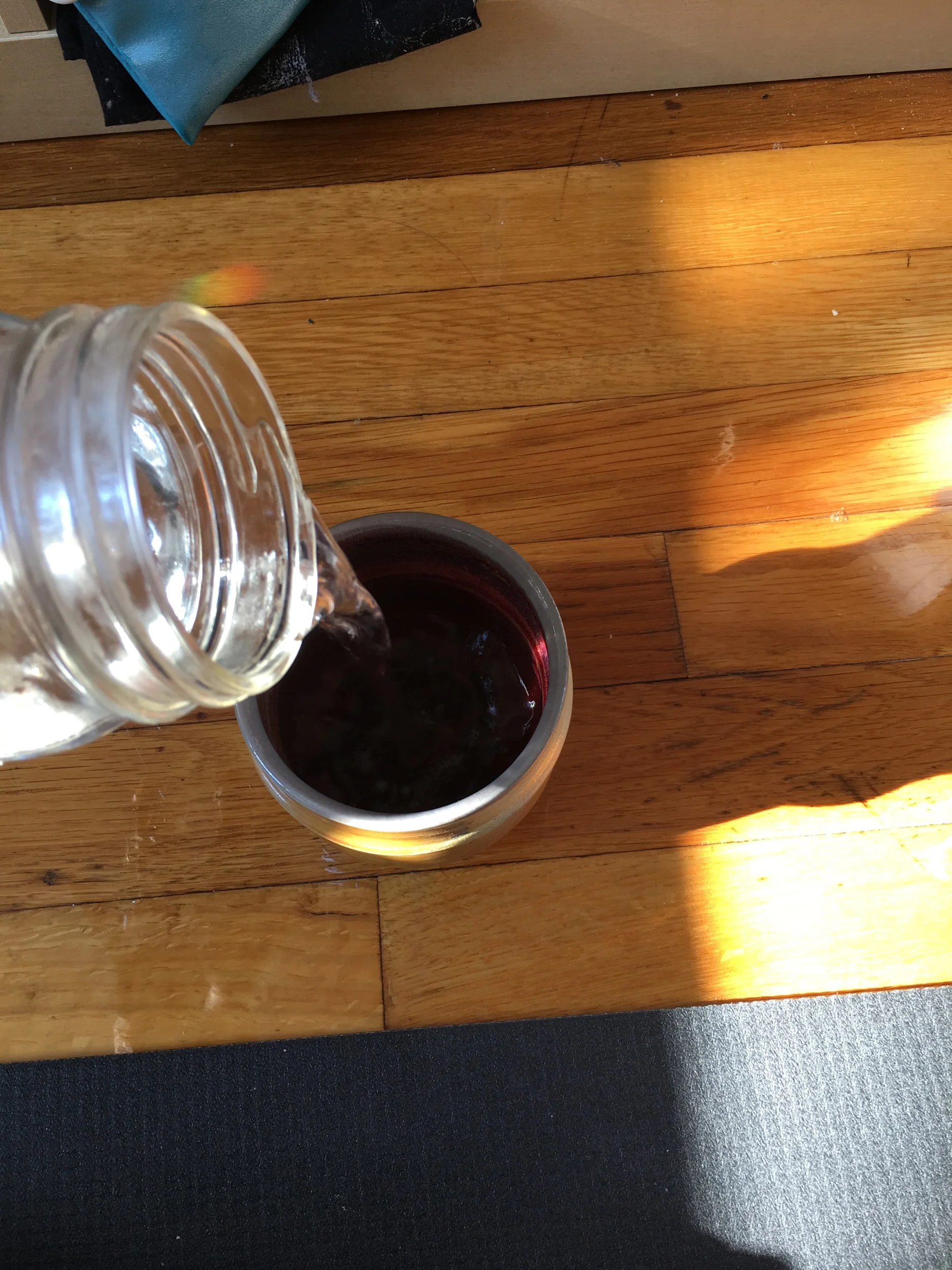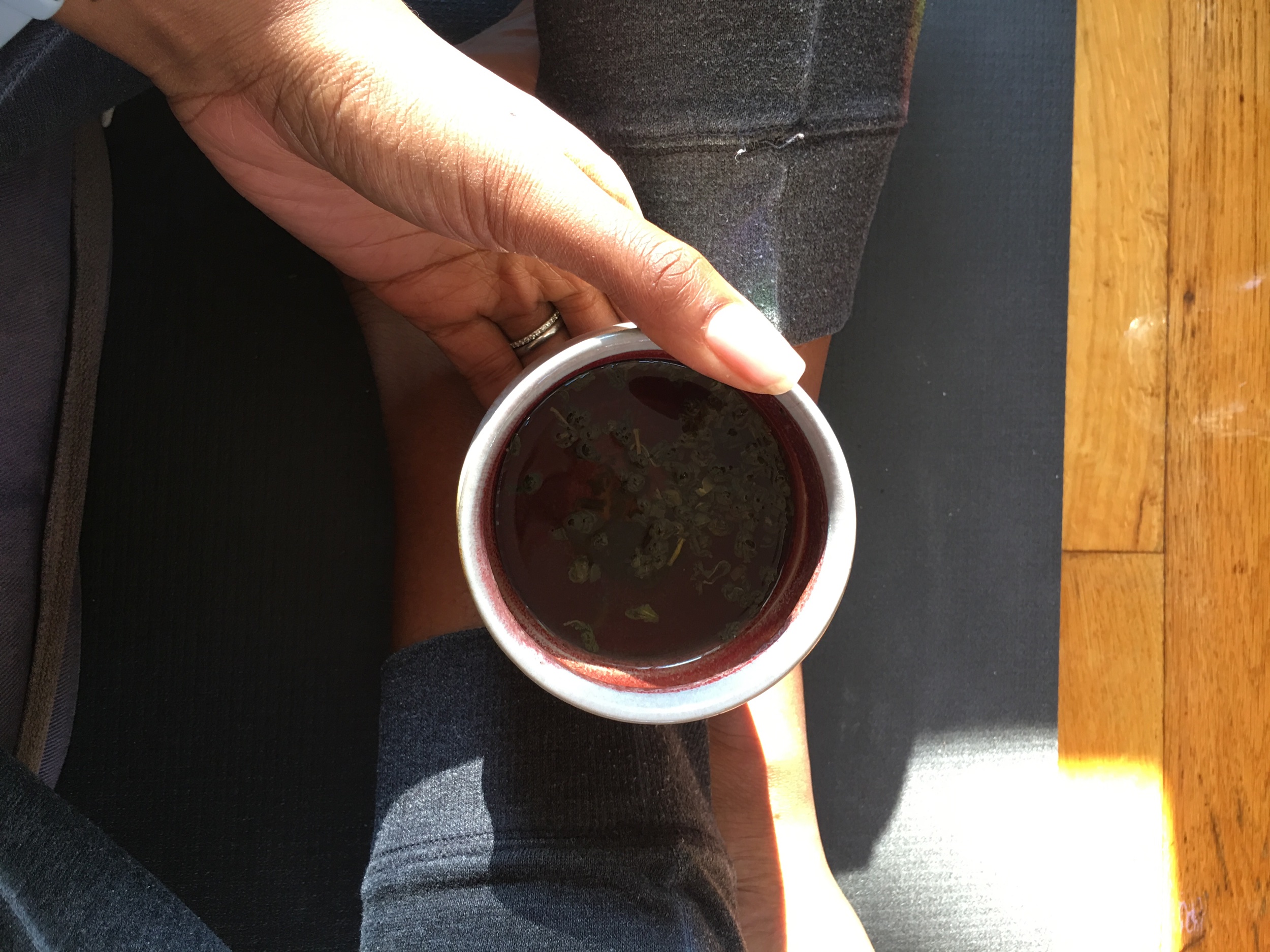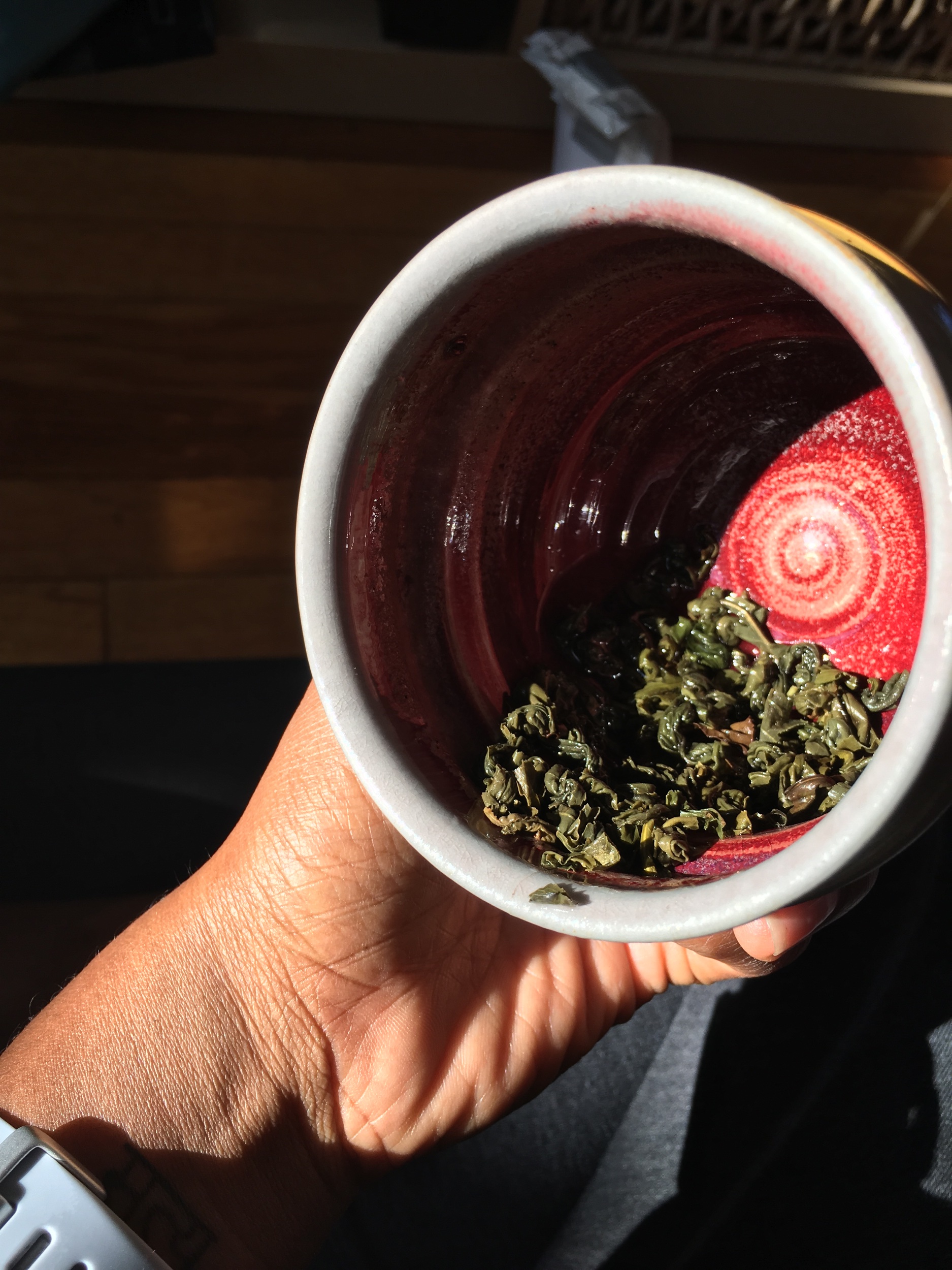Some of you are here because you’re regulars here, or because you saw a post on social media and wanted to check it out. Some of you are here because it’s your homework (incidentally, it’s also my homework). Whatever the case, Welcome. This post is a bit different than the usual, and features instructions for a guided meditation.
I didn’t want you to be too connected to a device via earbuds, I’ve chosen a slightly more analog route. So, if you’re here from IMS, you should have the little love note you got in class that got you here with your tea. If you’re here for some other reason, please feel free to read and then try out this meditation on your own. Lots of support below on what and how to do it.
And thanks, Sooz, for teaching me what this is, and showing me what a valuable practice it can be.
In Pursuit of Collective Community Practice
This is a ritual that I designed for you to learn and then practice on your own and to come back to again and again. It takes this form in part because the space I intended to teach it in was unavailable to do so in real time. There is something powerful and beautiful about knowing that you are stepping into a ritual space with others in real time, whether you’re in the room together not. With that in mind, I’ll be practicing this tea meditation this coming Saturday, October 5, 2019 at 8:00 am Eastern Time, in a quiet corner of my Cambridge home, if you want to try it with me at the same time, in a quiet corner of your home in Baltimore or New Haven or Chicago or Columbus or Seattle or wherever else you’ll be.
a tea meditation on change
Guidelines
1. Read all the instructions through (at least once, and likely twice) so you don’t feel too tethered to your computer or device once you decide to try it.
2. Find a good time and place to sit undisturbed. I find that early in the morning, before I’ve looked at my phone is nice: my discursive mind is still relatively quiet, and I’m able to be still more easily. (If you’re concerned that the caffeine in the tea might keep you awake, practicing this meditation before noon is wise. Having said that, the tea we’re using for this meditation—IMS colleagues—has the lowest caffeine profile of the types of tea: oolong is often consumed as an evening tea. You know your body. Choose wisely.)
3. Arrange for yourself to remain undisturbed: this might mean silencing your mobile phone or requesting some space and silence from a partner or roommate. A meditation like this is not recommended to practice outside, unless you have the capacity to exercise a significant degree of silence and solitude for yourself. You want to be undisturbed and to minimize distraction for ten to thirty minutes, depending on how much time you choose to stay.
4. Assemble your materials:
a tea bowl or mug;
about 1 teaspoon loose-leaf tea* (no need for a bag or filter, please);
about 8 oz water, brought to boil and cooled to your comfort;
a journal and a writing tool, or something else to take notes with.
Place these materials with you near the place where you’ll be sitting. PLEASE NOTE: during the meditation, steps 6-end, you are welcome to take a quick moment and jot a few words down as they come to you, but do your best not to get lost in the act of writing or drafting. There will be time to explore your thoughts in writing (or another form) at the end. Try to sustain your dharana (single-pointed focus) on this activity.
5. Before you take your seat, take a few minutes to make sure the body is comfortable. Because you’ll be sitting for a time, it might be useful to take a few gentle stretches. For more information or guidance on how you can prepare the body for sitting, please see brief video below.
6. Once you have relieved some residual tension and are ready to be still, find your seat. This seat need not be cross-legged, but it certainly can be. If you choose to sit cross-legged or kneeling on the floor, make sure to take a mat or blanket underneath the body, as well as a cushion or bolster or two under the hips. Sitting with the hips elevated can make sitting on the floor more accessible. On the floor, you can place your materials nearby, within arm’s reach. If you choose to sit at in a chair, sit near a table that will allow you to access the materials conveniently.
7. Take your seat. Arrange your body thoughtfully so you are as comfortable as you can be, to allow sensations of discomfort from the body to subside. Let the hands rest comfortably on the knees, thighs, or in the lap. Close the eyes, or allow the eyelids to fall over the eyes, allowing only a small sliver of light to come inside; whatever the case, let your awareness begin to move inward.
8. Breathe. Inhale. Exhale. Inhale, exhale. As you continue to breathe, notice your breath. Where are you feeling the breath move in the body? What parts of the body are responding to the breath? How does resting your awareness on your breath change your body? How does resting your awareness on your breath change your breath?
9. After several moments of feeling the body and breath become still and even, of feeling the awareness move inside, open your eyes and turn to your materials. Pour or pinch about one teaspoon of loose tea into the bottom of your mug. (IMS participants, you have enough tea in your sachet for two meditations, so one cup is about half of your portion. Other folks, this is about what you can pinch in between the thumb and several fingers.) No need to measure this or be too uptight about it. Trust your felt sense of the right amount of tea. Remember, no tea bag or strainer here. Allow the leaves to be loose in your bowl or cup.
10. Take a moment to consider the tea in the cup. How did it sound pouring into the cup? How did the dried leaves feel between your fingers? Can you smell it?
11. Pour the water over the tea. Watch it stream and fall into the cup. What sound does it make as it meets the leaves and fills the vessel? Is there steam rising from the water? How do the leaves respond to the water?
12. Pick up the tea bowl or mug. How does it feel in your hand(s)? What sensations are you aware of rising from within you as you hold this bowl of tea?
13. Lift the bowl to your face. Consider the bowl. What color is the tea? Take a breath. What are you able to smell? What can you feel on your face? What are the leaves doing in the bowl with the water?
14. Take a sip of the tea, and if you’re able to, hold it in your mouth for a moment before you swallow. What flavor or quality pools in your mouth as you hold the tea there? What flavor lingers after you swallow? What does it taste like? What does it remind you of?
15. Notice, if, in your first sip, you caught a leaf in your mouth or on your lip. Notice your reaction to this: how do you respond to this leaf? What does your reaction to this plant matter have to teach you? How will you navigate loose leaves in your tea?
16. Take another sip of tea, and then allow the mug to rest on the table or in your hands. Notice: what new sensations might be available in your body? How is the tea affecting your breath? Where do you feel the breath now? Has it changed from before?
17. After a time, take another slow sip of tea. How has the color of the tea changed? Has the texture changed? Has the flavor changed? How are you registering this change in your body? How are you meeting this change: is it positive? Negative? Neutral?
18. Continue this way, slowly drinking the tea one sip at a time. Note how the tea lands inside you, what you feel as you drink it. Note how it changes, and how you integrate (or struggle to integrate) those changes. Note how the tea tastes relative to how it smells. Consider these sensations and what they make you think, or what you feel. Take your time. Abide with this process and its sensations.
19. As you come to the end of your cup, consider what the leaves are doing in your cup. How have they gathered, or separated? Place the rim of the bowl or mug around your nose and mouth and take a deep breath, inhaling the residual fragrance of the tea. Pinch a few tea leaves between your fingers. Rub them together. How do they feel? What can you smell lingering on your fingertips left over from the tea leaves?
20. Before you tidy up, take a few minutes to reflect in and with your journal. Questions and prompts to help guide you:
How do you feel now, relative to how you felt at the beginning of this meditation? Is this because of the act of consuming the tea, or is it the process and attention you paid to it? What other processes might you practice or engage in with a similar level of attention? How you can you open yourself to their lessons?
What did you notice about the way the tea changed, specifically what did you notice in your body and what were your mental or emotional reactions to the changes? What do these sensations and reactions have to teach you about change? Were there parts of you (physical/mental/emotional) that wanted to leave or disrupt this meditation due to the change? Were there parts of you that were willing or able to stay present despite the change?
Change is an inevitability of life: seasons change, neighborhoods change, our bodies change, our relationships change, the world is changing around us. Some of these changes we may find easy to tolerate, or even welcome. Others may be confusing, off-putting, or downright frightening. In the Hebrew Bible, God promises Israel, “I the Lord do not change; therefore you, O Children of Jacob, have not perished.” (Malachi 3:6) In words of encouragement and clarity, the writer of Hebrews offers, “Jesus Christ is the same yesterday and today and forever.” (13:8) The manifest world around us changes, but we can find the capacity to experience change with grace and curiosity in our God. Let us remember what endures: not God’s law, but His love; not Her wrath, but Her welcoming; not Their capacity for vengeance, but Their capacity for generosity and transformation. These verses remind us that to be strong is to be tender. We’re invited to be open to experience and accept change; not to resist or deny change, nor demand things go back the way they were, but to choose to lean into change with open eyes and a soft, brave heart, buffeted by love, which never fades and never fails. What did you notice about this practice that you might draw on when you must support those parts of yourself that are struggling with or resistant to change?
21. As you reach the end of your reflection, feel free to conclude as you are led, with prayer, mantra, or breath. Used tea can be composted.
*A note about tea: if you’re participating in the meditation ritual for my Intro to Ministry Studies class, you were gifted a tea sample to use. If you’re choosing to try this meditation on your own, feel free to use any loose-leaf tea you like. Note that tisanes—herbal blends that aren’t strictly tea—may behave differently than green, white, oolong, or black teas used for a meditation like this.
IMS participants have been gifted either a sample of Formosa Fancy Superior Oolong Taifu oolong tea, or a sample of Hibiscus (Jamaica) petals to use for those caffeine-free. Again, the Hibiscus is likely to behave a bit differently than the oolong, but either are possible to use.
A photo slide show for some visual guidance…
…and a short video of some stretching suggestions to do before taking your seat. Please remember, this video is optional, it’s not at real speed, and I did my best to make it accessible. Feel free to adapt it or ditch it entirely and skip right to meditation.





